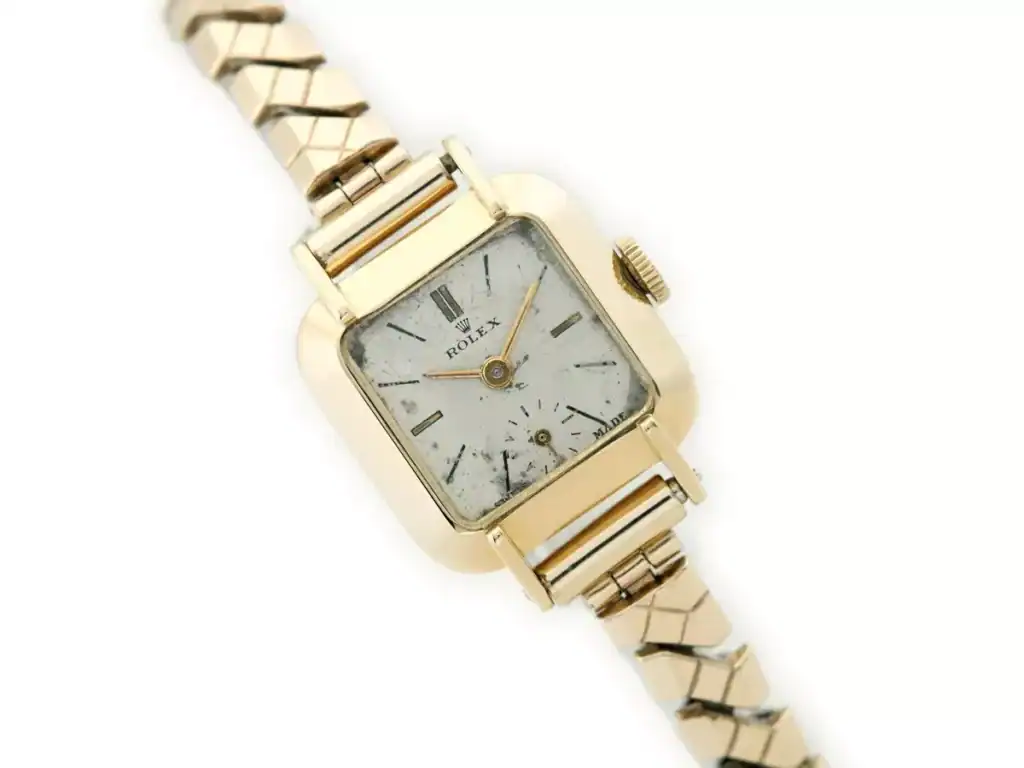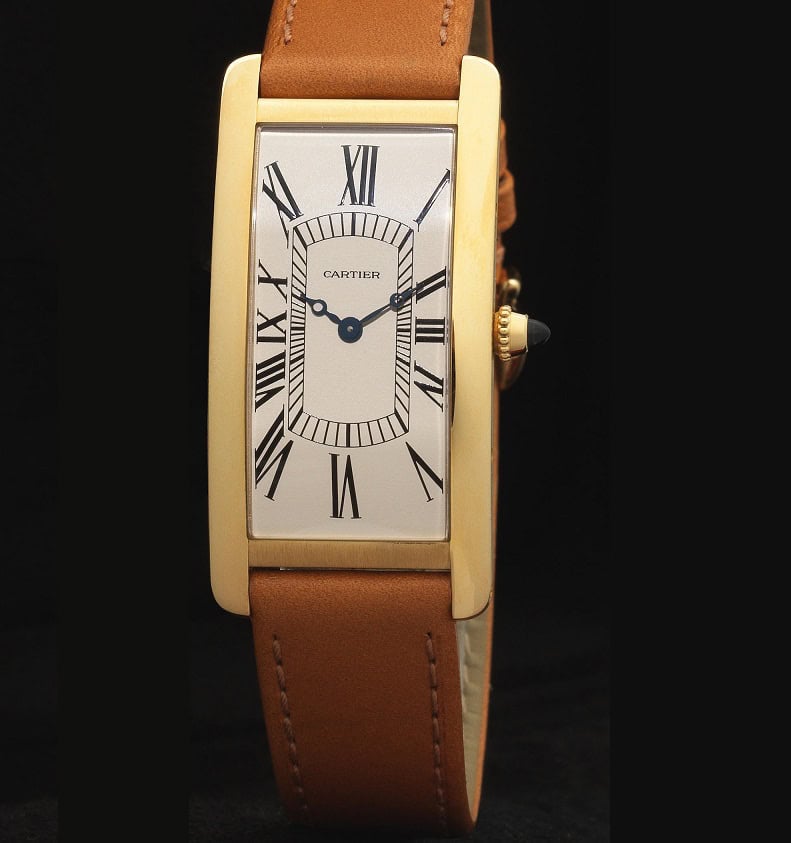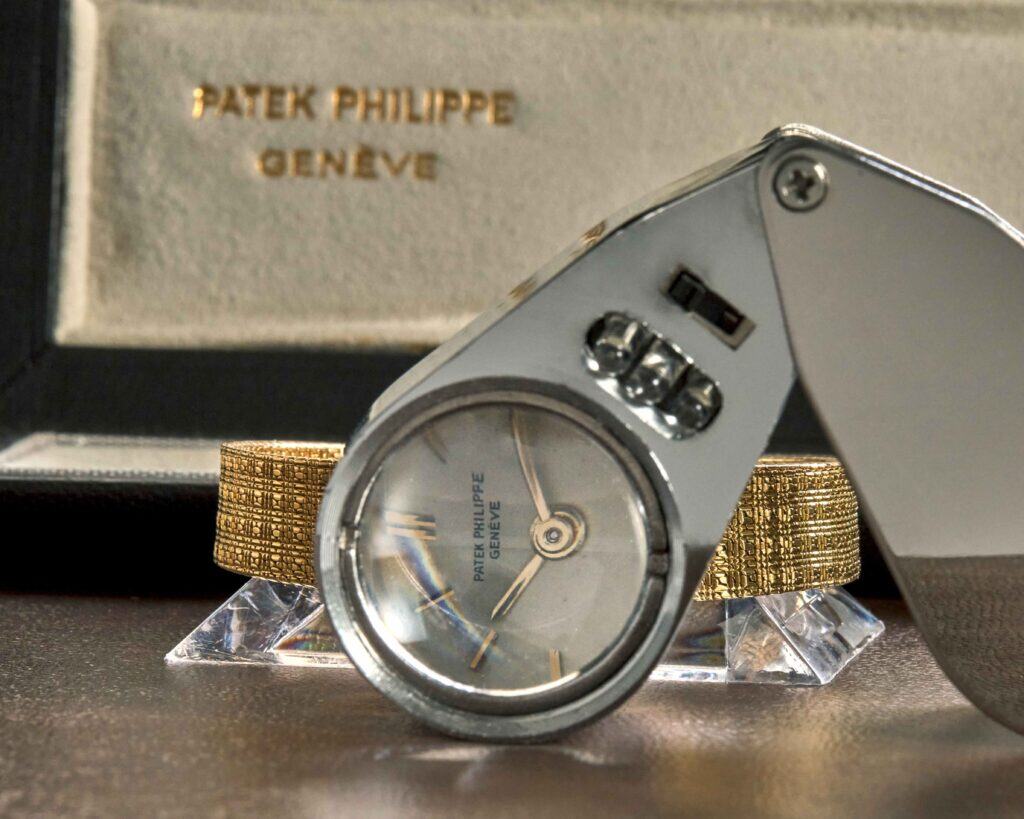By Alan Wood
Explore the evolution of ladies’ vintage watches from the 1920s to 1990s, celebrating style, craftsmanship and why these timepieces are rising in demand.

Alan Wood, founder of Vintage Gold Watches, is a trusted vintage watch dealer with over 35 years of private collecting experience. His deep knowledge and infectious passion for mechanical timepieces have earned him a highly respected reputation in the industry. Vintage Gold Watches, established in 2011, has become a reputable dealer thanks to Alan’s expertise and a skilled team of restorers. Alan’s love for vintage watches started as a young Mechanical Engineer and grew into an obsession. He believes the finest watches were made in the 1950s, ‘60s and ‘70s, and he is thrilled to share them with others.
From diamond-studded cocktail pieces of the 1920s to the bold unisex designs of the 1990s, vintage watches designed for women offer far more than timekeeping. They capture a unique intersection of fashion, fine craftsmanship and social history, shrinking the artistry of horology into miniature, wearable sculptures.
Once seen primarily as ornamental accessories, these watches are now being revisited and reappraised by collectors, investors and style-conscious buyers alike. With growing interest in smaller case sizes, the rise of sustainable luxury and a revaluation of feminine aesthetics in horology, ladies’ vintage watches are not only relevant, they’re quietly leading the conversation.
Art Deco Origins and the Rise of the Cocktail Watch
The story begins in the roaring 1920s, a time of dramatic social change. As women began to challenge traditional roles, their wardrobes – and their accessories – followed suit. Watches transformed from discreet time-telling devices to bold expressions of personal style.
Enter the cocktail watch. These petite, often jewel-encrusted timepieces were designed more for glamour than practicality, typically worn to evening soirees and celebrations. The design language reflected the Art Deco movement: geometric cases, bold symmetry and a sense of opulence. Brands like Cartier, Tiffany, and Patek Philippe pioneered these designs, producing pieces that blurred the line between watch and bracelet.
Mid-Century Refinement and Feminine Precision
The 1940s and 1950s saw vintage ladies’ watches take on softer, more refined aesthetics. War-time austerity gradually gave way to a new optimism, mirrored in elegant curves, guilloché dials and cases with more organic lines. These timepieces often featured precious metals, mother-of-pearl details or small diamond hour markers – never ostentatious, but quietly luxurious.
The craftsmanship of this era should not be underestimated. Many of these watches were fitted with precise mechanical movements that, despite their diminutive scale, rivalled those found in men’s watches. Watchmakers like Piaget and Jaeger-LeCoultre became known for their mastery of ultra-thin calibers, particularly within their ladies’ collections.

The 1960s to 70s: A Decade of Design Disruption
By the 1960s and 1970s, the wristwatch had become a fully mainstream accessory. For women, watch design began to reflect both shifting fashion trends and evolving lifestyles. This period brought a wave of experimentation in materials, shapes and movements.
The influence of modernist and minimalist design led to cleaner dials, fewer numerals and unconventional case shapes. Brands like Omega, Longines and Vacheron Constantin embraced bolder aesthetics – rectangular, oval or cushion-shaped watches, often paired with sculptural bracelets or integrated lugs.
Meanwhile, technological innovation also played a role. Quartz movements began to appear, offering slimmer profiles and reliable timekeeping, though many collectors today still prize mechanical movements from this era for their longevity and character.
From Feminine to Unisex: The Shift in the 1980s and 1990s
The closing decades of the 20th century saw another shift: the emergence of unisex and even oversized styles. With fashion growing increasingly androgynous, many women began wearing full-size men’s watches – Rolex Datejusts, Cartier Tanks and even Submariners became wardrobe staples for stylish women.
At the same time, brands began to recognise the demand for pieces that didn’t conform strictly to gender norms. Many models from this era feature mid-size cases (28–34mm), making them versatile for all wearers. Gold watches, in particular, became symbolic of success and personal expression, a sharp contrast to the dainty, hidden timepieces of earlier decades.
Why Collectors Are Rediscovering Ladies’ Watches
While men’s vintage watches have long dominated auctions and collector forums, ladies’ watches are now getting their due. Several factors are contributing to their rising popularity.
Design detail at a micro scale
Vintage ladies’ watches often feature astonishing levels of craftsmanship. From hand-finished dials to intricate bracelets and gem-set bezels, these timepieces showcase the full artistic potential of horology on a smaller canvas.
Affordability and rarity
Compared to their male equivalents, many vintage ladies’ models remain undervalued, though that’s changing. A Patek Philippe cocktail watch or a vintage Cartier Tank may offer a more accessible entry point for collectors seeking heritage, elegance and rarity.
A sustainable, stylish choice
In a world increasingly conscious of environmental impact, vintage watches offer a form of sustainable luxury. Choosing a pre-owned timepiece means preserving materials and craftsmanship already in existence, rather than consuming new resources.
Historic appeal
Each watch tells a story, not just of the brand, but of the era in which it was created. A 1940s piece might reflect post-war optimism; a 1970s watch might echo the sleek lines of brutalist architecture. This historical context adds richness and depth to the collecting experience.
Notable Vintage Ladies’ Watch Brands to Know
While countless brands contributed to the evolution of ladies’ watches, a few stand out for their influence and enduring appeal:
- Cartier: Masters of form and finesse. The Baignoire, Tank and Panthère remain icons of feminine design.
- Patek Philippe: Known for elegant case shapes, rare complications in smaller formats, and exceptional finishing.
- Jaeger-LeCoultre: Their Duoplan and Reverso models are sought-after for their design ingenuity and heritage.
- Vacheron Constantin: A leader in ornate case work and ultra-fine movements, especially during the mid-20th century.
- Omega & Longines: Produced a wide range of versatile, stylish models with both automatic and manual movements.
- Rolex: From the Lady-Datejust to mid-size Day-Dates, Rolex remains a benchmark of reliable luxury.

What to Look for When Choosing a Vintage Ladies’ Watch
Choosing a vintage timepiece involves more than just aesthetics. Here are a few key considerations for new buyers and seasoned collectors alike:
- Condition and originality: Look for watches with original dials and hands where possible. Over-polishing or excessive restoration can affect value.
- Movement quality: Mechanical movements in vintage ladies’ watches can be works of art, but they require proper servicing.
- Provenance: Papers, bo or a known history of ownership can enhance a watch’s appeal and long-term value.
- Size and wearability: Case size, strap fit, and dial readability are important. Don’t rule out mid-size or men’s models if they suit your style.
- Servicing needs: Vintage movements typically need maintenance every 3–5 years. Consider ongoing care as part of the investment.

Why the Future of Collecting Includes Women’s Watches
For too long, the spotlight in watch collecting has been firmly fixed on men’s models. But as tastes evolve, and as more women enter the world of watch appreciation, vintage ladies’ watches are finally being recognised for what they are: miniature masterpieces.
Whether you’re drawn to the elegance of a 1930s Art Deco piece, the technical brilliance of a 1960s Omega, or the timeless cool of a vintage Rolex Datejust, the world of ladies’ vintage watches is as rich and rewarding as any corner of horology.
And in an age where individuality, sustainability, and slow luxury are more desirable than ever, these smaller timepieces offer something truly special: beauty with substance, history with heart.
Whether you’re drawn to the charm of Art Deco cocktail pieces or the bold elegance of mid-century classics, vintage ladies’ watches offer a timeless way to express personal style. Explore the world of vintage horology at Vintage Gold Watches and subscribe to our newsletter for collector stories, expert insights, and standout timepieces from across the decades.


